- October 16, 2023
Egyptian Uromastyx: Care Guide, Varieties, Pictures, & More
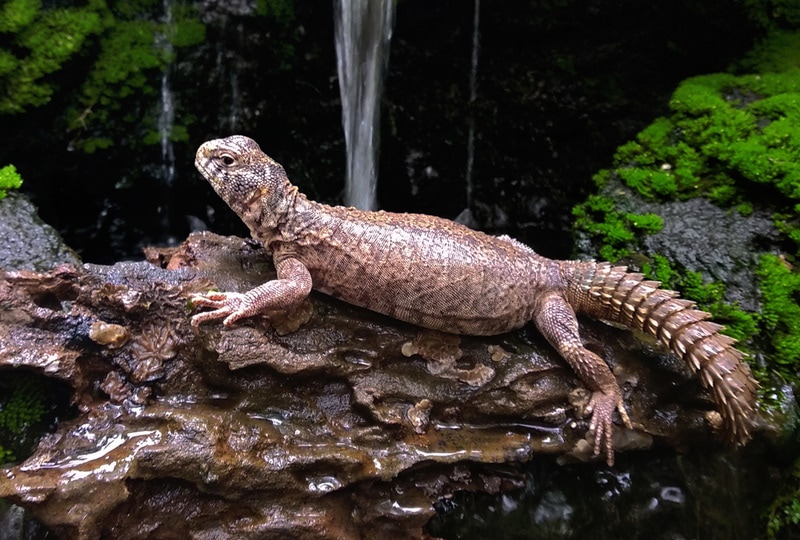
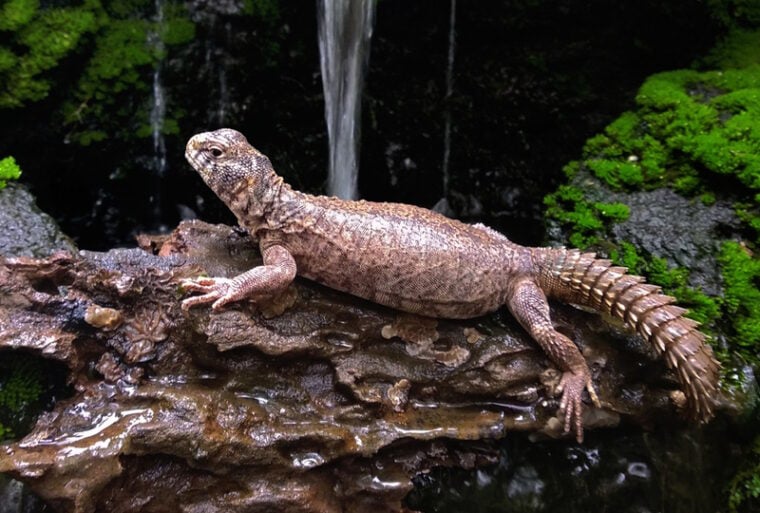
The Egyptian Uromastyx is a type of lizard that is more officially known as the Uromastyx aegyptia. This lizard is native to North Africa, including Egypt and Sudan. They are well adapted to the desert environments they live in, which has resulted in their distinctive appearance and behavior.
They come in various color variations, including shades of yellow, orange, brown, and sometimes hints of green or blue. The coloration often helps them blend into their natural desert habitat. Some varieties are particularly sought after and may be more expensive than other options.
In this article, we’ll take a look at how to keep these lizards in captivity, as well as some more general information about this species.

Egyptian Uromastyx Overview
| Species Name: | Uromastyx aegyptia |
| Common Name: | Egyptian Uromastyx, Spiny-tailed Lizard, Dabb Lizard |
| Care Level: | Intermediate |
| Lifespan: | 15–25 years |
| Adult Size: | 10–16 inches |
| Diet: | Herbivorous |
| Minimum Tank Size: | 40 gallons |
| Temperature & Humidity | 70–120°F |
Do Egyptian Uromastyx Make Good Pets?
The Egyptian Uromastyx can make a great pet for those who can meet their specific care requirements. However, they aren’t good for everyone. They have some unique needs that have to be properly addressed to ensure they thrive.
Uromastyx are considered intermediate-level reptile pets. They require a good understanding of reptile care, particularly in terms of their dietary needs, habitat setup, and temperature requirements. They aren’t necessarily the best option for lizard keepers who are just now starting out. Providing the proper habitat for these lizards can be challenging. They need a spacious enclosure with a temperature gradient that allows them to thermoregulate, as well as a basking area and a cooler zone.
These lizards also need ample space to move around, and they have particular dietary needs.
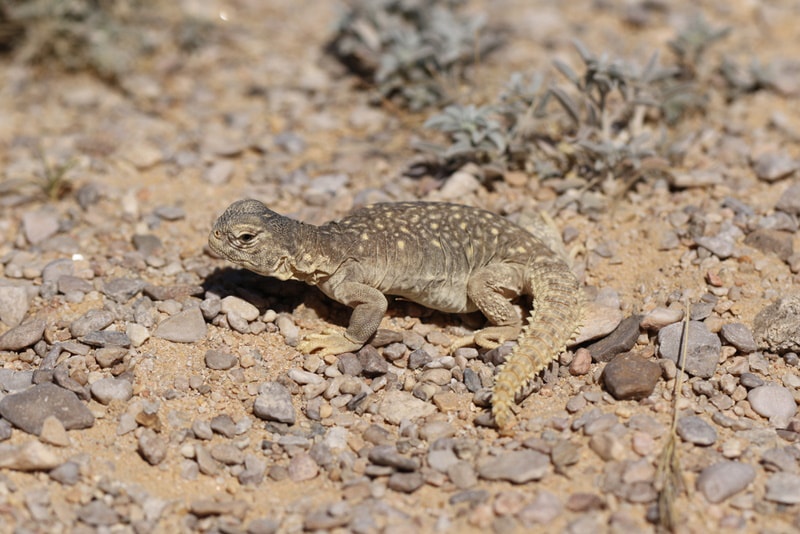
Appearance
These lizards have pretty distinctive features. They have unique adaptations that help them survive in the desert. For instance, they have a stout and robust body with a relatively short tail. Their tail is covered in large, spiny scales (hence their name, “spiny-tailed lizard”). Their tail serves as a defense mechanism against predators. They can lash out with this tail when threatened.
They do vary in color a little bit, depending on the species and the individual’s age. Common colors include orange and brown. Some may even have hints of blue or green. They have small, granular scales on their body, which is a characteristic of the agamid family of lizards.
Their head is large compared to the rest of their body, and they have a pretty blunt snout. Their eyes have protective scales over them to help shield them from blowing sand (an important feature in the desert).

How to Take Care of an Egyptian Uromastyx
Habitat, Tank Conditions & Setup
Creating a suitable habitat for these lizards is extremely important. If their tank is set up correctly, they can remain generally healthy. If it isn’t, they will be more prone to diseases and other health problems. These lizards are desert-dwelling reptiles. Therefore, their habitat should mimic the arid conditions of their natural environment.
Tank
Be sure to provide a spacious enclosure that allows for their natural behaviors and movement. A 40-gallon tank is suitable for a single lizard, but bigger is always better. You should place several hiding spots within the enclosure to provide some security. These can be reptile shelters or naturalistic hides. Rocks and branches of various sizes can also be placed, as they provide some climbing and perching opportunities.
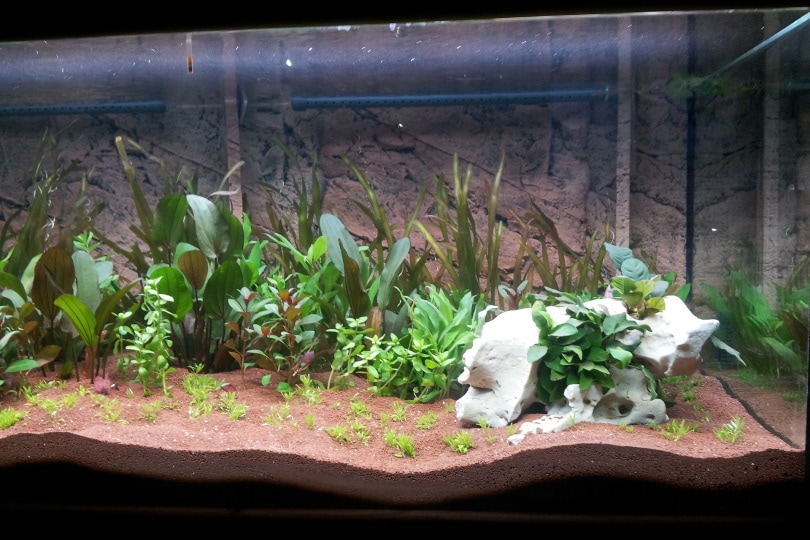
Substrate
Because they like to burrow, a mixture of sand and soil is suitable. Avoid substrates that cause impaction, like loose calcium-based sand.
Heating & Lighting
You’ll need to have a basking area with a provided heat source. This basking area should be between 100 and 120°F, and you should use a thermometer to monitor temperatures accurately. Uromastyx require access to UVB lighting to properly metabolize calcium. Use a high-quality UVB bulb and position it to cover about 70% of the enclosure. UVB bulbs need to be replaced every 6–12 months as their UV output diminishes over time. You won’t be able to see the UVB bulb decreasing in output, so it is important to change it on a schedule.
| Tank Recommendations | |
| Tank Type | 40 gallon glass vivarium |
| Lighting | UVB lighting |
| Heating | Basking light (100–120°F) |
| Best Substrate | Sand or sandy soil |

Feeding Your Egyptian Uromastyx
Feeding your lizard a balanced diet is vital. However, their diet can be a bit more complicated than others. As herbivores, their diet should consist of only plant materials. You should vary their diet, though, as they need to have a range of nutrients included in their diet. Variety is key, as different foods provide different nutrients.
Leafy greens should be the basis of their diet. You should supplement with other vegetables, like zucchini and squash. These provide some extra nutrients, but they shouldn’t be the basis of their diet. You can occasionally give fruits, too, but these are high in sugar and should be mostly avoided.
These lizards require some amount of calcium. Dust their food with a calcium supplement a few times a week or however much is recommended by your vet. Calcium is crucial for bone health. You may also need to provide them with a vitamin D3 supplement, especially if they aren’t exposed to UVB properly.
Some foods may seem safe but should be avoided due to their nutrient ratios. For instance, foods like spinach and beet greens contain high levels of oxalates, which can interfere with calcium absorption and lead to kidney problems. Limit high-sugar foods, too.
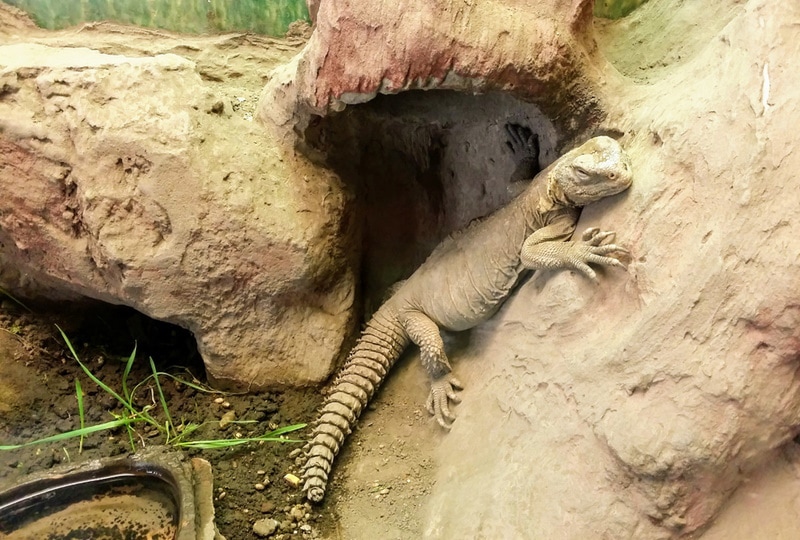
| Diet Summary | |
| Fruits | 10% of diet |
| Insects | 0% of diet |
| Veggies | 90% of diet |
| Supplements Required | Calcium & Vitamin D3 |
Keeping Your Egyptian Uromastyx Healthy
Keeping your lizard healthy requires getting all of the things we’ve discussed correctly, such as their habitat and diet. You should take them for regular checkups to an exotic vet to catch conditions early and potentially make specific changes to their diet. Between visits, monitor your lizard for signs of illness or changes in behavior. Changes in eating and energy may indicate underlying illnesses.
These lizards aren’t known for their handling tolerance, so you should limit handling to avoid stress. If you do need to handle your lizard, do it gently and infrequently. Make sure to keep your tank at the correct temperature gradient, as your lizard relies on these gradients to keep their temperature at the proper level. Use multiple thermometers to track the temperature in different locations.
Don’t overfeed, as this can lead to obesity. Often, lizards don’t get fat “on the outside.” Instead, they simply build up fat on the inside, causing all sorts of health problems. It’s important to maintain cleanliness to prevent bacterial growth, too.
Common Health Issues
These reptiles are generally pretty hardy. However, they can get sick if their care needs aren’t met. It’s important to correct these health problems early to prevent health issues down the road.
Metabolic bone disease is sadly very common and the direct result of a calcium or D3 deficiency. Make sure to provide UVB light and calcium supplementation. This condition is very serious and affects bone growth, causing death eventually. Respiratory infections can be caused by a poor habitat. Improper temperatures and humidity levels can lead to lung problems, for instance.
Unsanitary conditions and injuries can lead to mouth rot, which can eventually kill the reptile if not properly treated.
https://www.instagram.com/p/Civw_ecM_8n/
Lifespan
The lifespan of an Egyptian Uromastyx in captivity can vary based on factors such as their care, environment, genetics, and overall health. With proper care, Egyptian Uromastyx can have a relatively long lifespan. On average, they can live for about 15 to 25 years, although some individuals have been known to live even longer under optimal conditions.
These reptiles aren’t hard to take care of. However, they do require you to get several things right. For instance, you must ensure their habitat and diet is optimal to ensure they don’t develop health issues.
Breeding
Breeding these reptiles isn’t recommended for beginners, as it means that you have to get their habitat even more perfect. Plus, there are many risks involved. This species isn’t one of the easier ones to breed in captivity.
You have to sex your lizard first, which is often easier said than done. Then, the lizard needs to be at least 2 to 3 years old to ensure they are mature.
Are Egyptian Uromastyx Friendly? Our Handling Advice
These lizards aren’t the easiest to handle. In fact, they aren’t known for being easy to handle, so they aren’t a great option for those who want to handle their reptile regularly. You should limit handling to prevent stress, which can cause illnesses and injuries.
If you do need to handle these lizards, be very careful and gentle. Avoid any sudden movements or loud noises, as these can startle the lizard. Slow movements are essential to avoid stressing them out, which can cause injury.
https://www.instagram.com/p/CFpSvSHsWtl/
Shedding & Brumation: What to Expect
Like all lizards, the Egyptian Uromastyx sheds regularly. As they grow, the outer layer of their skin becomes tighter, as it doesn’t grow with the rest of their body. Once it becomes too tight, they must shed it. How often this occurs depends on their age and growth rate. Younger lizards shed more often, as they are growing faster. Signs that shedding is around the corner include changes in behavior, dull eyes, and increased hiding. The lizard may not have an appetite for a day or so.
If exposed to the proper conditions, these lizards will brumate. Simply put, this is a similar state to hibernation—but for reptiles. If you change the lizard’s lighting to match the outdoor lighting (decreasing the daylight hours in the winter), then they will likely brumate.
During brumation, your Uromastyx will not eat as much. Their overall activity level will decrease substantially. It’s important to monitor their health, as you don’t want them to lose too much of their body weight.
How Much Does the Egyptian Uromastyx Cost?
These lizards vary in cost a bit. However, you can plan on spending $50 to $150 or more for your average juvenile. Certain colors and patterns can be even more expensive—some up to $1,000. Purchasing from a reputable breeder is important to ensure your lizard is healthy, but this is often more expensive than purchasing from a pet store.
https://www.instagram.com/p/CnSgwUkvlyz/?img_index=1
Care Guide Summary
| Pros | Cons |
| Herbivorous diet | Specific care requirements |
| Low odor | Limited interaction |
| Long lifespan | Limited availability |

Conclusion
The Egyptian Uromastyx is not as widely available as other lizard species out there. However, they can be a good option for beginners who don’t want a lizard that they need to interact with all that often. They don’t do great with handling, but this also means that you don’t need to handle them all that much.
Their care requirements are a bit specific, though. It can be challenging for new lizard keepers to figure out exactly how to keep their habitat correct, which is vital for their overall health. For this reason, we only recommend them for beginners who are ready to learn how to care for them or for experienced reptile keepers.
Featured Image Credit: I Wayan Sumatika, Shutterstock
Tags
What do you think?
Related Articles

New Puppy Checklist: Gear You’ll Need for Your New Dog
Getting a new puppy is really exciting, but before you welcome them home, it’s important to prepare your space for them. Since puppies need a

How Big Do Mini Poodles Get? Vet Reviewed Average Weight & Growth Chart – Dogster
The information is current and up-to-date in accordance with the latest veterinarian research. Learn more » When you buy a Miniature Poodle, you might not

Can Police Dogs Smell Nicotine? Vet Verified Facts & Info – Dogster
The information is current and up-to-date in accordance with the latest veterinarian research. Learn more » While cigarette sales have been declining steadily for decades,

How Old Is 5 in Dog Years? Vet-Approved Guide to Each Size of Dog – Dogster
The information is current and up-to-date in accordance with the latest veterinarian research. Learn more » A common method for calculating a dog’s age is

